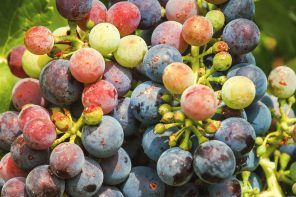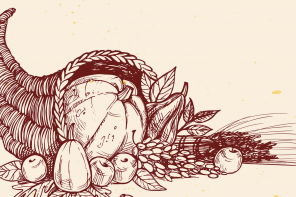A grape harvest is something that too few wine lovers witness. There’s no doubt that the idea of harvest is widely romanticized and is understood as a core part of wine’s existence. Millions of vintage charts promise to tell us what the harvest was like any given year. But those charts are no substitute for being there, getting your hands (extremely) dirty, talking to growers, winemakers, cellar rats and picking crews.
Each and every person performs a timeworn and ritualistic role under skies filled with the aromas of fermentation. Entire towns are taken over by harvest, places where the scent gets into your soul. It brings with it a clearer understanding of how the most notoriously complicated beverage on earth springs into life. Turns out, it gets a lot of help along the way.
Pick-up trucks, semis and tractors form a steady procession. They teeter with stacked bins of grapes that have been picked in pre-dawn hours. Winemakers, sorters and forklift drivers fight the fatigue of successive 20 hour days that go on for weeks and months. Harvest does bring joy to those involved in the process, but usually only when it’s over. It’s a place where pure labor and tradition meet modern techniques. Hard-ass work is essential, and anything can happen.
[pullquote align=”right” cite=”” link=”” color=”#0396ec” class=”” size=””]Your average wine drinker will never come into contact with this culture or the determination and sacrifice that reaps such amazing rewards- but it wears on nonetheless, each and every autumn.[/pullquote]Malfunctioning equipment can create utter chaos when 75,000 lbs. of grapes are due for delivery. What’s worse? Mother Nature always gets the final say. Unexpected and often devastating challenges (like unexpected rains or your run-of-the-mill wildfires) are common. The hellishness and hustle of harvest is seen and felt in wine communities all around the world. But, as with anything hard, it has its moments.
In Burgundy, France, college students toil alongside West Africans, then share communal dinners that could win multiple Michelin-stars. In Healdsburg, California, up to three generations of workers and wine folks congregate daily to gather grapes, share stories and devour carnitas when the day is done.
There’s an incredibly rich way of life that revolves around the cycle of grapevine to wine. Across the globe it’s different, but fundamentally the same. Your average wine drinker will never come into contact with this culture or the determination and sacrifice that reaps such amazing rewards- but it wears on nonetheless, each and every autumn.
At the end of the day, it seems impossible to fully appreciate wine without an appreciation of the very thing that makes it possible: the harvest. So next time you pour yourself a glass, sip with the people who made it in mind.








